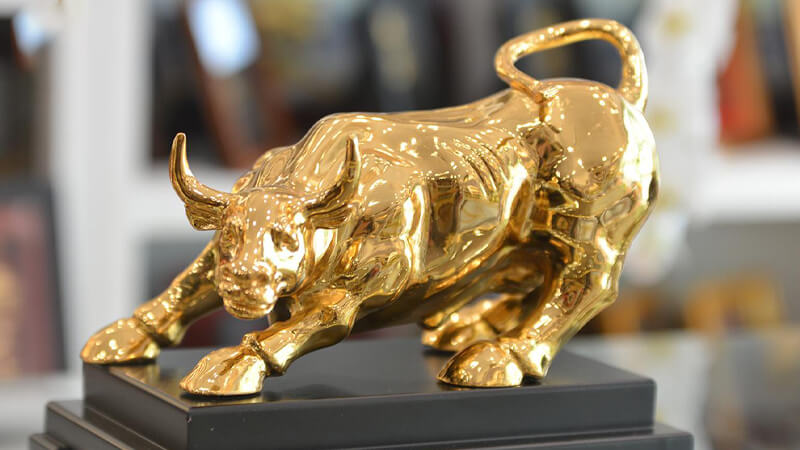The water buffalo is a gentle yet powerful animal, a noble symbol of Vietnamese culture. These creatures are closely associated with farmers and are known for their gentle, hardworking, and resilient nature. Many people believe that buffaloes are sacred animals that bring good fortune and prosperity, especially with the upcoming Year of the Buffalo. Read on to learn more about the meaning of buffalo statues in feng shui and how to display them appropriately.
1 The Significance of Buffalo Statues in Feng Shui
The buffalo stands firmly with its four sturdy legs, symbolizing strength. Additionally, buffaloes are associated with diligence, hard work, and perseverance. These mighty creatures can help you overcome obstacles in your career path, leading to smoother and more successful endeavors.
 The buffalo stands firmly with its four sturdy legs, symbolizing strength.
The buffalo stands firmly with its four sturdy legs, symbolizing strength.
Placing a feng shui buffalo statue in your home is believed to increase blessings, positive energy, health, and abundant wealth for the household. These statues have the ability to attract fortune from all directions, making your ventures prosperous and profitable. Particularly for those in real estate, banking, or finance-related industries, a buffalo statue is a must-have talisman for attracting good luck and success in their respective fields.
 Feng shui buffalo statues bring blessings, positive energy, health, and abundant wealth.
Feng shui buffalo statues bring blessings, positive energy, health, and abundant wealth.
Individuals born in the years of the Buffalo, Rat, Rooster, Pig, and Snake should consider placing a buffalo statue in their homes to invite good fortune and a more prosperous life. On the other hand, those born in the year of the Goat are advised against displaying buffalo statues due to the conflicting nature of the signs.
2 How to Properly Place a Buffalo Statue
The ideal direction to place your buffalo statue is north or northeast, as these positions allow the buffalo to fully exert its power. According to the bagua diagram, the buffalo belongs to the Khôn trigram, and placing it in the north or northeast directions aligns with the positive energy, attracting luck and warding off negative influences. Avoid placing the statue in the south or southwest directions, as these are associated with the “luctus” (six killings) and can bring disaster.
 North or northeast is the ideal direction for placing a buffalo statue.
North or northeast is the ideal direction for placing a buffalo statue.
According to feng shui principles, placing a buffalo statue in your office can promote career advancement and salary increases. Position it in the center of your desk or on a bookshelf. If you wish to attract wealth, consider placing the statue near the entrance, facing the main door or window.
For shops and stores, placing a buffalo statue at the cashier’s desk can enhance business prosperity and financial abundance. In a corporate setting, displaying a buffalo statue helps attract wealth, strengthen the company’s position and brand, and establish a positive and lasting impression.
 Avoid placing the buffalo statue with its horns facing you.
Avoid placing the buffalo statue with its horns facing you.
It is important to note that you should avoid positioning the buffalo statue with its horns facing you, as this can bring about conflict and disputes. Additionally, do not place the statue in your bedroom, near the altar, or in areas considered impure, such as near the toilet or kitchen.
We hope that this article has provided you with valuable insights, and may your choices bring you and your family good fortune.
How to Grow and Care for Gold and Silver Plants at Home: Meaning and Images
Discover the mystical power of gold and silver trees and their unique significance in feng shui. Learn how to plant and care for these special plants in order to bring luck and prosperity into your life.
2023 Lunar New Year Gift Ideas for Older Family and Friends
As 2021 approaches, families worldwide are gathering to celebrate the special bond between grandparents and their grandchildren. To show their love and admiration, these thoughtfully chosen gifts will bring a smile to the face of the elderly. Here, we have compiled a list of the 13 most meaningful Tet presents that can bring joy to our beloved grandparents.














